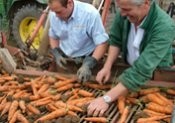It's pasteurisation Jim, but not as we know it...

Speaking at Food Manufacture’s Emerging Food Safety Issues conference in London yesterday, Campden BRI new products and technologies section manager Craig Leadley said he was particularly excited by ground-breaking work at the University of Glasgow.
Researchers there had come up with “a totally unique way of generating ozone inside sealed packages by generating a plasma”, he said.
“I can’t go into any more detail, but this could be a really interesting new approach. They are working on proof of concept trials now.”
While the pathogen-blasting abilities of ozone had been recognised for years, said Leadley, food manufacturers had been reluctant to use it . “You can gas flush with with ozone or apply it via water, but ozone is highly toxic so generation on-site is not always desirable”
Pulsed Electric Fields
Advances in pulsed electric field non-thermal pasteurisation being tested at the University of Loughborough also meant that this technology - currently only suitable for pumpable products – could in future be used to sterilise solid foods, significantly increasing its potential, he said.
Ohmic heating
Finally, recent refinements to ohmic heating (a food sterilising technology that came to the fore in the 1980s) had improved efficiency and reduced costs, prompting a resurgence of interest, he added.
During ohmic heating, food serves as an electrical resistor, and is rapidly heated by passing an electrical current through it. The electrical energy is dissipated into heat, which results in rapid and uniform heating and eliminates burning, fouling on heat transfer surfaces and overcooking.
This made it particularly well-suited for heating liquid foods containing large particulates, such as soups, stews, and fruit pieces in syrup, in which quality was often compromised by conventional cooking where heat was transmitted to the food by conduction and/or convection, said Leadley.














